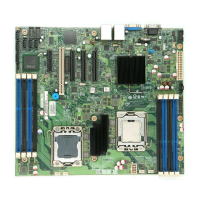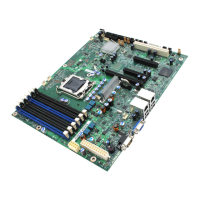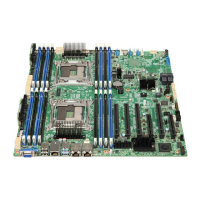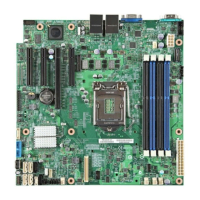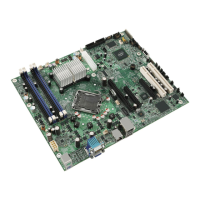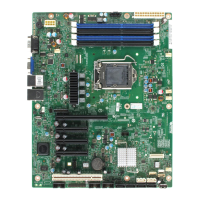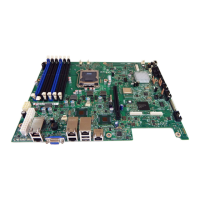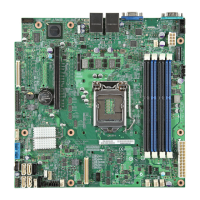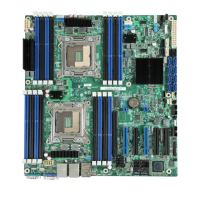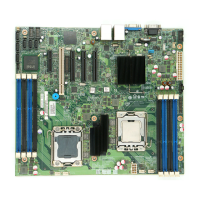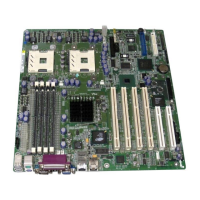Intel® 5000 Series Chipsets Server Board Family Datasheet System Management
Revision 1.1
Intel order number D38960-004
131
These specifications are defined in the following sub-sections. Section 4.26 talks about basic
characteristics of the communication protocols used in all of the above interfaces.
4.22 Channel Management
Every messaging interface is assigned an IPMI channel ID by IPMI 2.0. Commands are
provided to configure each channel for privilege levels and access modes. The following table
shows the standard channel assignments:
Table 42. Standard Channel Assignments
Channel ID Interface Supports
Sessions
0 IPMB No
1 LAN 1 Yes
2 LAN 2
1
Yes
3 LAN 3
1
(Intel
®
Remote Management Module (Intel
®
RMM) / Intel
®
RMM NIC) Yes
4 EMP (Basic / PPP) Yes
5 Reserved –
6 PCI SMBus
1
No
7 SMM No
0Eh Self
2
–
0Fh SMS / Receive Message Queue No
Notes:
1. If supported by the server platform.
2. Refers to the actual channel used to send the request.
4.23 User Model
The BMC supports the IPMI 2.0 user model including User ID 1 support. 15 user IDs are
supported. These 15 users can be assigned to any channel.
4.24 Session Support
The BMC supports a total of five simultaneous sessions. This is shared across all session-
based channels.
4.25 Media Bridging
The BMC supports bridging between the EMP and IPMB interfaces, and between the LAN and
IPMB interfaces. This allows the state of other intelligent controllers in the chassis to be queried
by remote console software. Requests may be directed to controllers on the IPMB, but requests
originating on the IPMB cannot be directed to the EMP or LAN interfaces.

